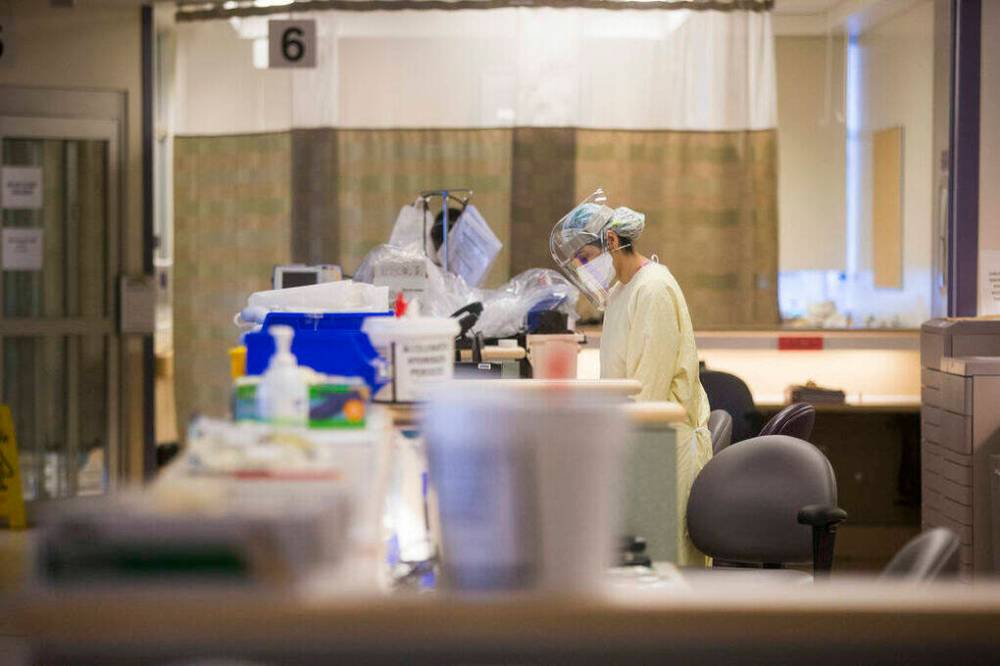Amalgamation worsened hospital care
Read this article for free:
or
Already have an account? Log in here »
To continue reading, please subscribe:
Monthly Digital Subscription
$0 for the first 4 weeks*
- Enjoy unlimited reading on winnipegfreepress.com
- Read the E-Edition, our digital replica newspaper
- Access News Break, our award-winning app
- Play interactive puzzles
*No charge for 4 weeks then price increases to the regular rate of $19.00 plus GST every four weeks. Offer available to new and qualified returning subscribers only. Cancel any time.
Monthly Digital Subscription
$4.75/week*
- Enjoy unlimited reading on winnipegfreepress.com
- Read the E-Edition, our digital replica newspaper
- Access News Break, our award-winning app
- Play interactive puzzles
*Billed as $19 plus GST every four weeks. Cancel any time.
To continue reading, please subscribe:
Add Free Press access to your Brandon Sun subscription for only an additional
$1 for the first 4 weeks*
*Your next subscription payment will increase by $1.00 and you will be charged $16.99 plus GST for four weeks. After four weeks, your payment will increase to $23.99 plus GST every four weeks.
Read unlimited articles for free today:
or
Already have an account? Log in here »
Hey there, time traveller!
This article was published 10/05/2022 (1308 days ago), so information in it may no longer be current.
Stuffing patients into hospital hallways and staff lounges is not what the Progressive Conservative government sold Manitobans when it announced plans in 2017 to amalgamate Winnipeg health care facilities.
Five years ago last month, then-health minister Kelvin Goertzen and senior officials from the Winnipeg Regional Health Authority unveiled plans for the biggest overhaul of Winnipeg hospitals in decades. The pledge: to improve the quality and timeliness of patient care by consolidating acute care services at three hospitals, while converting three emergency departments to urgent care centres to accommodate less acute patients.

The revamped system would ensure patients got “the right care at the right time” by consolidating specialists and diagnostic equipment at acute care centres, the province announced. Patients would be assessed, treated and discharged quicker, reducing average hospital stays and freeing up space in busy emergency departments and on medical wards. Patient flow through the system would improve and ER wait times would fall.
The plan looked promising on paper, but its execution was marred by a disastrous human resource rollout and undercut by government austerity. The right staff were not in the right place at the right time and regional health authorities were forced to absorb deep budget cuts as part of the province’s accelerated deficit reduction plan.
The plan looked promising on paper, but its execution was marred by a disastrous human resource rollout and undercut by government austerity.
The situation was made worse during the pandemic with the influx of COVID-19 patients and the number of hospital staff off work owing to infection, the effects of which are still felt today.
What should be alarming to Manitobans is that hospital overcrowding continues to worsen, even as the number of COVID-19 admissions declines. A leaked internal memo last week revealed that all Winnipeg hospitals are being asked to find “non-traditional locations” to place patients to address the bed crisis, including hallways, staff lounges, already cramped hospital rooms or “wherever patient care space can be created.”
The problem is not a lack of physical space or equipment in hospitals, it is a shortage of staff. When there is a lack of trained professionals to maintain appropriate staff-patient ratios, “bed block” occurs and the system backs up in emergency departments where admitted patients sometimes languish for days. When that happens, ER wait times rise. Hospitals are now being instructed to pull patients from ERs and urgent care centres and relocate them into any space they can find in other parts of the building, even if it means putting them into inappropriate areas. It’s the kind of substandard care that often leads to poor patient outcomes.
The problem is not a lack of physical space or equipment in hospitals, it is a shortage of staff.
This scenario is the opposite of what the Tory government promised Manitobans in 2017. Amalgamation was supposed to improve the system, not make it worse. Judging by the monthly ER wait times published by the WRHA, the system is worse off today than it was prior to consolidation.
It’s obvious that, almost three years after the second phase of consolidation was implemented, there is inadequate capacity at Winnipeg hospitals, particularly at the city’s three acute care facilities (Health Sciences Centre, St. Boniface and Grace hospitals). The province should take immediate action to expand capacity, including training and recruiting more staff. It must allocate the necessary resources to do so, well beyond what was projected in the 2022 provincial budget. The budget for acute care services this year (at just over $2.5 billion) is only $13 million higher than it was in 2019-20, the year before the pandemic. Adjusted for inflation, that’s a cut. It’s not sustainable and Manitoba is seeing the effects of it today.










